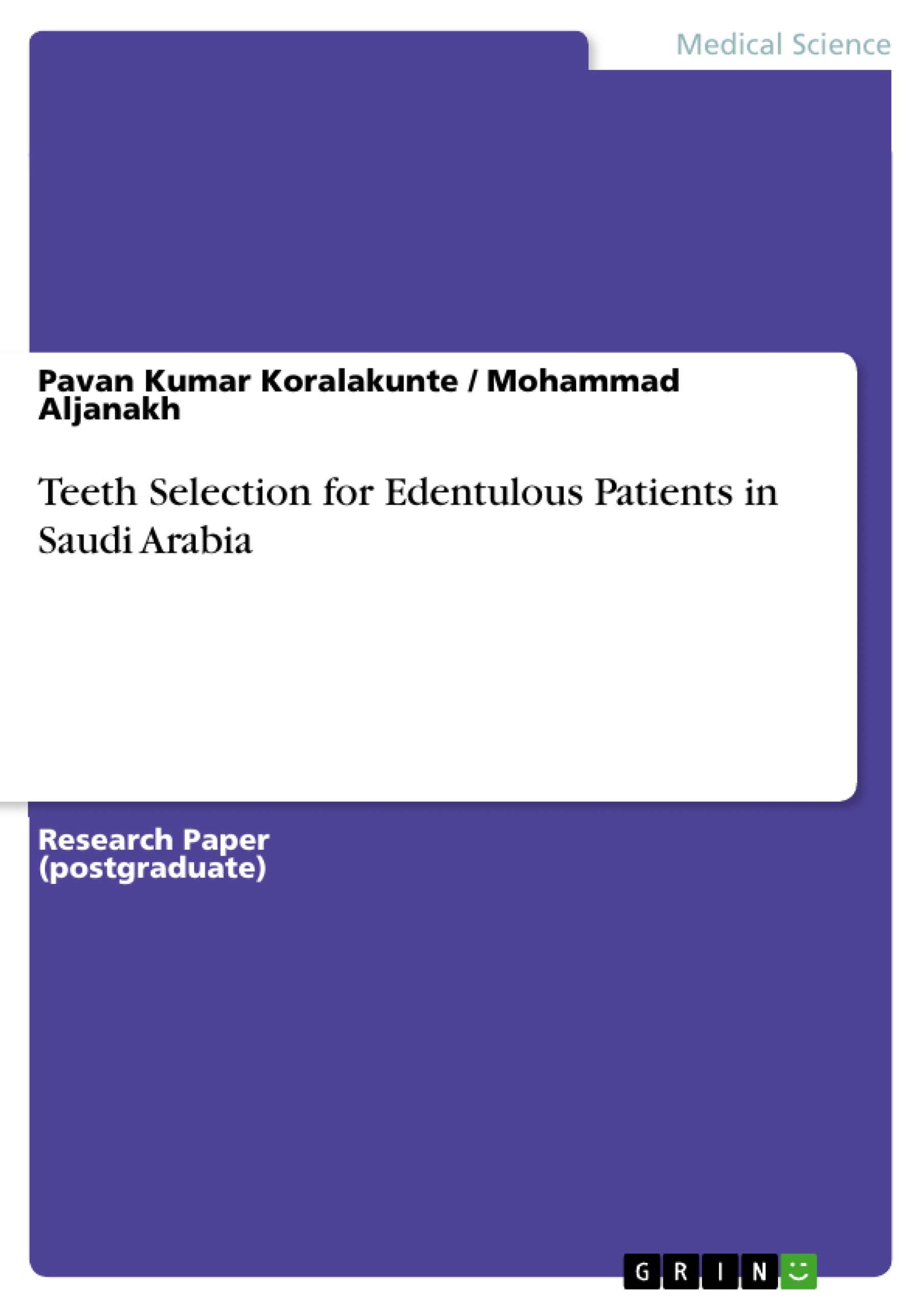AIMS AND OBJECTIVES: To determine various tooth form, arch form and palatal form with gender identification between males and females of Saudi population.
METHODS AND MATERIALS: Irreversible hydrocolloid impressions were made of the maxillary teeth of 100 dentate male and female subjects to obtain study casts. A standardized procedure was adopted to photograph the maxillary dental arches and the maxillary central incisors on the study casts taken from each subject. The outline form of tooth, arch and palatal form were determined using a standardized method. The average of six prosthodontist’s evaluation were considered who classified the outline tracings visually. The statistical analysis was done using Chi-Square and results tabulated.
RESULTS: The predominant tooth is combination form in males and ovoid form in females, the predominant arch is ovoid form in males and square form in females and the predominant palatal form are both U and V shaped in males and U shaped in females.
CONCLUSION: Except for the tooth form there was significant difference with arch and palatal form among males and females of the population group studied. The determined tooth, arch and palatal forms are useful in selection and arrangement of artificial teeth among Saudi edentulous population group. Generalising from the study is questionable as the sample size is small. Further studies should be conducted in a larger sample to conform the study results.
Inhaltsverzeichnis (Table of Contents)
- AIMS AND OBJECTIVES
- METHODS AND MATERIALS
- RESULTS
- CONCLUSION
- KEY WORDS
- ABBREVIATIONS
Zielsetzung und Themenschwerpunkte (Objectives and Key Themes)
The primary goal of this study is to investigate the differences in tooth, arch, and palatal forms between male and female Saudi patients, providing valuable insights for prosthetic tooth selection and arrangement in the edentulous population.
- Tooth form variation between genders
- Arch form differences in male and female Saudi subjects
- Palatal form disparities among genders
- The applicability of these findings to prosthetic tooth selection and arrangement
- The importance of further research with larger sample sizes
Zusammenfassung der Kapitel (Chapter Summaries)
- AIMS AND OBJECTIVES: This section outlines the study's objective to identify variations in tooth form, arch form, and palatal form between male and female Saudi patients. It aims to utilize these findings for selecting and arranging artificial teeth in edentulous individuals within this demographic.
- METHODS AND MATERIALS: This section details the methodology employed, including the collection of irreversible hydrocolloid impressions from 100 dentate male and female subjects, the standardization of photography procedures, and the use of a standardized method for determining the outline form of tooth, arch, and palate. The analysis relied on a six-prosthodontist evaluation and statistical analysis using Chi-Square.
- RESULTS: This section presents the study's findings, highlighting the predominant tooth, arch, and palatal forms in male and female subjects. Significant differences were identified between genders, particularly in arch and palatal forms.
Schlüsselwörter (Keywords)
The primary keywords and focus topics of this study include maxillary central incisor tooth form, maxillary arch form, palatal form, palatal vault, gender differences, prosthetic tooth selection, edentulous population, Saudi population, and statistical analysis.
- Quote paper
- Pavan Kumar Koralakunte (Author), Mohammad Aljanakh (Author), 2014, Teeth Selection for Edentulous Patients in Saudi Arabia, Munich, GRIN Verlag, https://www.grin.com/document/293473



